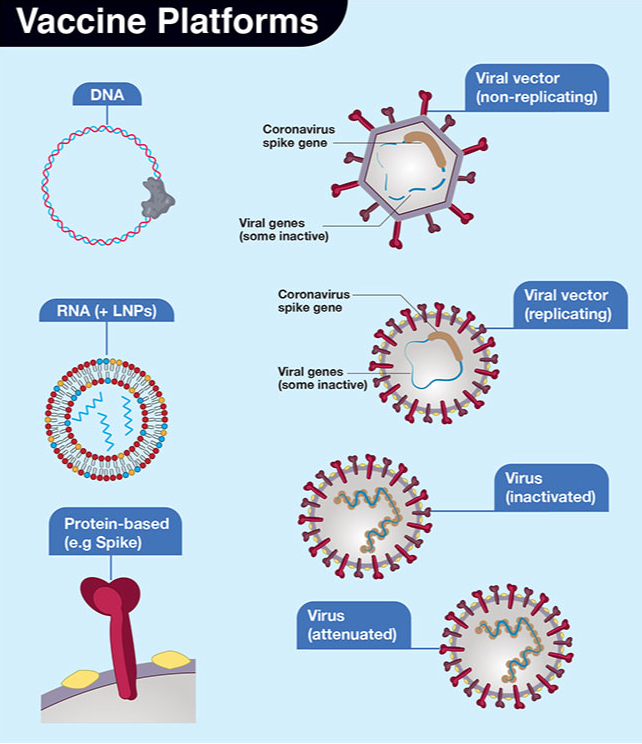What is the Difference Between Viral and Nonviral Vectors
Table of Contents
The key difference between viral and nonviral vectors is that viral vectors are genetically engineered viruses that act as gene delivery vehicles in delivering foreign genetic material into cells by using their viral genome, while nonviral vectors are chemical vectors such as inorganic particles, lipid-based vectors, polymer-based vectors, and peptide-based vectors and act as gene delivery vehicles in delivering foreign genetic material into cells.
In gene therapy, foreign genetic materials are introduced into a patient in order to treat a genetic disease. Various techniques are used in gene therapy to introduce genetic material from the outside to the inside of the body. It is possible only through a delivery system called a vector. Vector is a microscopic delivery truck that transports foreign genetic material into a target cell. There are two types of vectors normally used in gene therapy. They are viral and nonviral vectors.
CONTENTS
1. Overview and Key Difference
2. What are Viral Vectors
3. What are Nonviral Vectors
4. Similarities – Viral and Nonviral Vectors
5. Viral vs Nonviral Vectors in Tabular Form
6. Summary – Viral vs Nonviral Vectors
What are Viral Vectors?
Viral vectors are molecular biology tools that are commonly used to deliver foreign genetic material into cells. This process can be performed by using a living organism (in vivo) or by using cell culture. The viruses have specialized molecular mechanisms usually to deliver their genomes into the cells that they infect. Transduction is the mechanism the viruses use to deliver their genetic material into host cells. The viral infected cells are known as transduced cells. This transduction mechanism can be developed into a useful tool in gene therapy. Viral vector-based gene delivery method was first used in the 1970s by the American biochemist Paul Berg. He used a modified SV40 genome containing DNA from bacteriophage λ to infect kidney cells maintained in cell cultures. In addition to molecular biology and gene therapy, viral vectors are also used in vaccine development.

Figure 01: Viral Vector
Viral vectors should possess several key properties in order to act as vectors. They normally should be safe, low toxic, stable, cell type-specific, and easily identified after transduction.
Types of Viral Vectors
There are numerous viral vectors currently used for various purposes. Some examples are retroviral vector, lentiviral vector, adenoviral vector, adeno associated viral vector, and plant viral vector (tobacco mosaic virus). Sometimes, hybrid vectors are also used in genetic engineering. The hybrid vectors are vector viruses that are genetically engineered to have qualities of more than one viral vector.
What are Nonviral Vectors?
Nonviral vectors are gene delivery vehicles that are inorganic particles, lipid-based vectors, polymer-based vectors, and peptide-based vectors. Normally, nonviral vectors are useful in delivering different types of nucleic acids, including small DNA (oligodeoxynucleotides), large DNA (plasmid DNA), and RNA (ribozymes, Si RNA, or mRNA). There are various nonviral vector delivery methods.

Figure 02: Nonviral Vector
Types of Nonviral Vectors
Inorganic particles include calcium phosphate, silica, and gold that facilitate foreign DNA delivery to cells. Lipid-based vectors that deliver foreign DNA include cationic lipids, lipid nanoemulsions, solid lipid nanoparticles. In peptide-based vectors, cationic peptides rich in residues like lysine and arginine attached to a polyplex are used to deliver foreign DNA. Moreover, polymer-based vectors are cationic polymers mixed with foreign DNA. Polymer-based vectors include polyethylenimine, chitosan, dendrimers, and polymethacrylate. Furthermore, most cardiovascular trials use nonviral vectors as a mode of gene transfer.
What are the Similarities Between Viral and Nonviral Vectors?
- Viral and nonviral vectors are two types of vectors normally used in gene therapy.
- They are tools of molecular biology.
- Both act as delivery vehicles in transferring foreign DNA into cells.
- They are genetically engineered to deliver foreign DNA effectively.
What is the Difference Between Viral and Nonviral Vectors?
Viral vectors are gene delivery vehicles that are based on delivering foreign genetic material into a cell by using a viral genome while nonviral vectors are gene delivery vehicles that are based on delivering foreign genetic material into a cell by using inorganic particles, lipid-based vectors, polymer-based vectors, and peptide-based vectors. So, this is the key difference between viral and nonviral vectors. Furthermore, viral vectors are biological agents, while nonviral vectors are chemical agents.
The below infographic presents the differences between viral and nonviral vectors in tabular form for side by side comparison.
Summary – Viral vs Nonviral Vectors
Vectors act as delivery vehicles in delivering foreign genetic material into cells efficiently. Two types of vectors are currently involved in gene therapy. They are viral and nonviral vectors. Viral vectors are various types of viruses developed to deliver foreign genetic material into a cell by using a viral genome. Nonviral vectors are chemical vectors such as inorganic particles, lipid-based vectors, polymer-based vectors, and peptide-based vectors, etc., used in gene therapy to deliver foreign genetic material into cells. Thus, this is the summary of what is the difference between viral and nonviral vectors.
Reference:
1. “What Are Viral Vectors?” Beckman Coulter Life Sciences.
2. Ramamoorth, Murali, and Aparna Narvekar. “Non Viral Vectors in Gene Therapy- an Overview.” Journal of Clinical and Diagnostic Research : JCDR, JCDR Research and Publications (P) Limited, Jan. 2015.
Image Courtesy:
1. “Fphar-11-00937-g004-L” By Colin D. Funk, Craig Laferrière, and Ali Ardakani – Funk CD, Laferrière C and Ardakani A (2020) A Snapshot of the Global Race for Vaccines Targeting SARS-CoV-2 and the COVID-19 Pandemic. Front. Pharmacol. 11:937.https://doi.org/10.3389/fphar.2020.00937 (CC BY 4.0) via Commons Wikimedia
2. “SNALP Structure” By ShanSabri – Own work (CC BY-SA 3.0) via Commons Wikimedia
ncG1vNJzZmivp6x7pbXFn5yrnZ6YsqOx07CcnqZemLyue9ahmK1lmah6tbTEZpuinpaav6a6wp5km52krLKmuoyvoKuZnGKur7CMp6anrpmnrq151Z6araeiqHw%3D